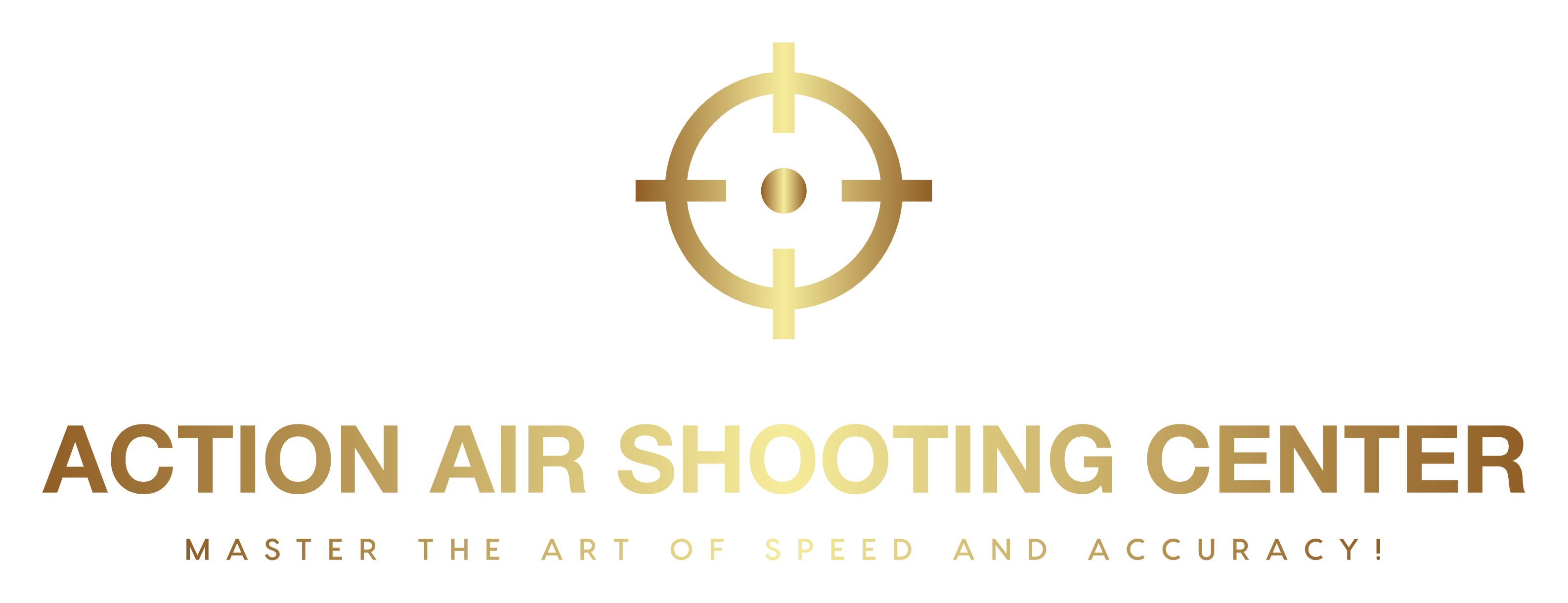Action Air
Action Air - Functional Shooting
Plastic bullet guns
- Plastic bullets are used. A safe and fun way to practice shooting
IPSC Rules
- Action Air is a functional shooting sport under the IPSC (International Practical Shooting Confederation). International Practical Shooting Competition Rules Promotes accuracy, speed and safety
Safety
- Safety is the sport's number one priority. Competitions are planned and implemented with safety first.
A hobby for everyone
- Suitable for shooters of all ages and abilities Excellent way to develop motor skills and concentration
Join in!
Action Air's IPSC classes offer a variety of competition opportunities designed for different types of weapons and equipment. Here's an overview of some of the more common categories:
Standard Division
- This is a basic class using standard Airsoft guns.Maximum 18 rounds, magazine must not extend beyond 20mm of the gunGuns and equipment are close to their real world counterparts
Open Division
- In this class, more extensive modifications to weapons are allowed, such as optical sights and compensators. Up to 28 rounds, maximum magazine length 170 mm1. Magazine capacity and weapon modifications are more free
Production Division
- Guns must be in original manufacturer condition. No more than 15 rounds, gun must be unaltered and listed in the IPSC Production Division1. This class is designed to equalize competition and limit costs.
Classic Division
- In the classic class, 1911 type weapons are used. Maximum of 10 cartridges, the pistol must be a 1911 type and fit in an IPSC measuring box. The weapons must fit in an IPSC measuring box and the capacity of the magazines is limited
These classes allow competitors to participate in a way that suits their equipment level and preferences.
Here is a summary of the rules for Action Air:
General Principles
- Action Air follows IPSC competition rules. The sport uses Airsoft guns that shoot 6mm plastic bullets.
Equipment and Safety
- Competitors must wear appropriate equipment, such as safety glasses. The force coefficient of weapons must not exceed 2 Joules with a 0.20 gram bullet
Competition and Points
- The competitions consist of different courses and tasks that test accuracy and speed. Points are calculated based on the quality of hits and execution times.
You can find more information and complete rules on IPSC's official website or in the rules document published by the Finnish Shooting Sports Association
Action Air competitions use a variety of targets designed to simulate real situations and challenge shooters' skills. Here's an overview of the most commonly used goalboard types:
Paper paints
- The most common type of goal board, consisting of cardboard or paper.Printed dot areas to aid in scoring.Attached to a rack or hung from a wire1.
Steel paints
- Gives audible and visible feedback on the hit. Made of hardened steel and produces a clear "ping" sound on the hit. Various shapes and sizes, such as plates, poppers, swings and spinners1.
Moving Targets
- They add a challenge to training by simulating moving targets. They require accuracy and timing from the shooter1.
Reactive Paints
- Designed to react to hits in a visible way.
You can find more information and instructions on the use of Action Air targets on the official IPSC website or in the guides related to the hobby
Calculation of points
Action Air IPSC scoring is based on performance and accuracy. Here is an overview of the scoring principles:
- Hit points: The targets are divided into different point values called A, C and D zones. Hits in the A area give the most points. A=5 points, C=3 points, D=1 point. Time: The competitor's performance time is an essential part of the final result. The time starts from the first shot and ends at the last stop plate Calculation formula: The final score is calculated by dividing the sum of hit points by the execution time. This gives the competitor's “Hit Factor”, which is: Hit Factor=Execution Time Sum of Hit PointsRankings: Competitors are ranked based on their “Hit Factor” values, from highest to lowest



